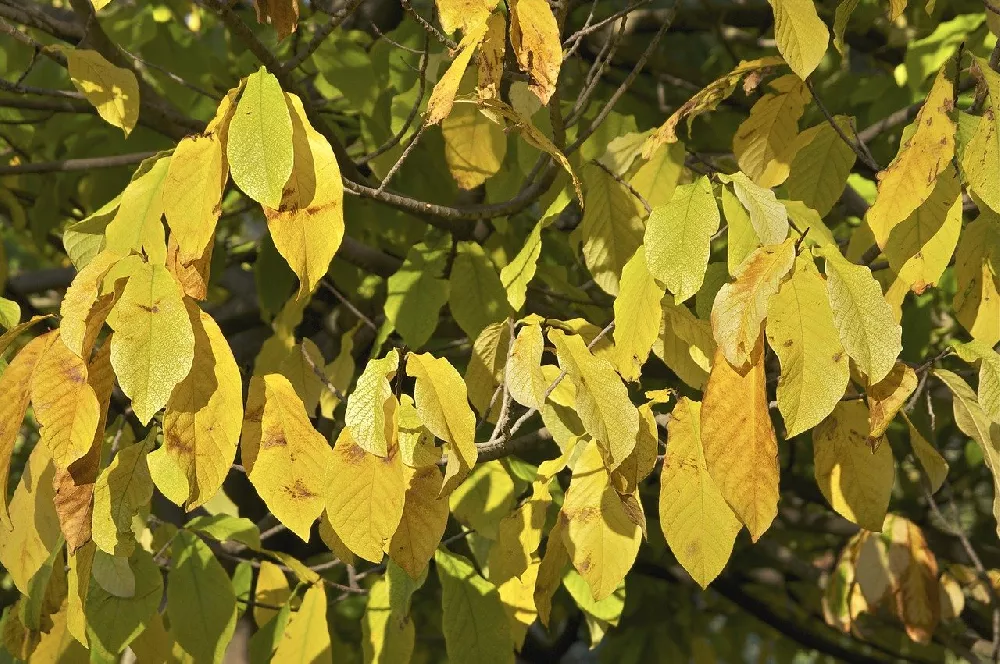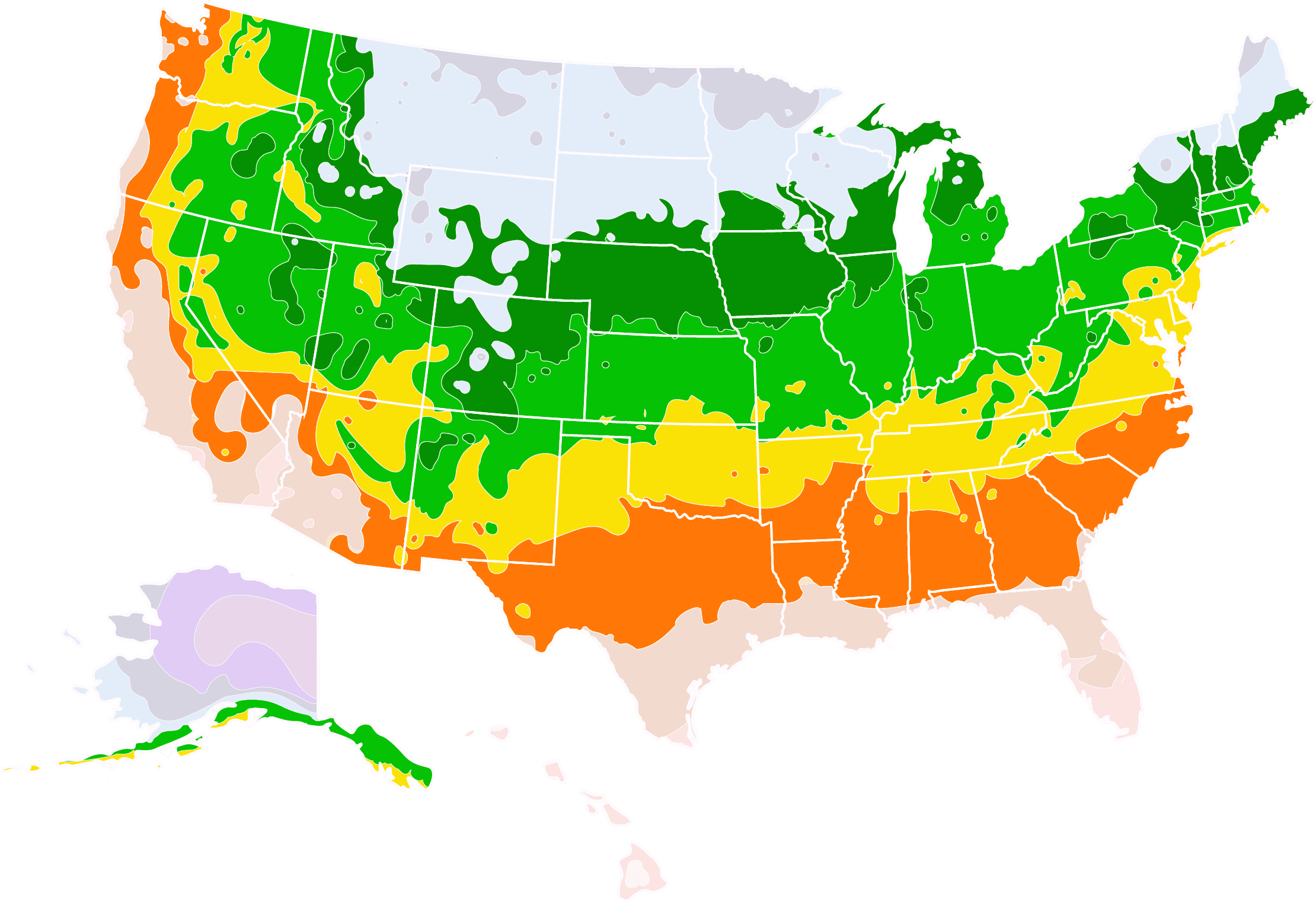- Home >
- Apple Trees >
- Paw Paw Trees
Paw Paw Trees for Sale - Buying & Growing Guide
Although they are native to North America, pawpaw trees are considerably less common then, say, apple or pear trees. And that’s a shame, because they feature two-fold benefits: they are an attractive addition to any landscape, and their fruit, which is rarely found in supermarkets, is sweet and delicious.
Enter your zip code to find nearby stores that may carry this plant.
Plant Care
Sunlight

Pawpaw trees prefer full sun, so site them where they will get at least 6 hours of direct light a day.
Watering
Pawpaws need an inch of water a week, so if you are not receiving this from rain, water them at the root zone.
Fertilizing

Fertilize your pawpaw in the spring with an all-purpose, balanced fertilizer, such as 10-10-10, spread around the tree’s root zone.
How to Grow Pawpaw Trees
How to plant pawpaw trees
Pawpaws, which are native to much of North America, like rich, fertile soil that holds water well but also drains well. Plant your pawpaw where it will get plenty of sun, and work several shovels of compost or leaf mold into the soil before planting. Have your soil tested for pH before planting: it should be neutral to slightly acidic for your pawpaw to thrive.
Pawpaws have a deep tap root, so handle the root ball with care before planting as it is easily damaged. If the sapling is pot-bound, with roots circling around themselves, tease them apart slightly so they don’t strangle the tree.
Place the sapling in a hole that’s roughly twice as wide as the root ball and just as deep, then backfill (replace the dirt you removed from the hole) with soil that you have enriched with organic matter. Firm the soil around the plant, then water thoroughly. An organic mulch placed around the tree’s drip line will lessen the need for watering.
How to achieve maximum results
Choosing the right site for your pawpaw is the best thing you can do to achieve maximum results. Pawpaws have weak branches that are easily damaged by high winds, so plant your tree in a protected spot near a bush, building, or hedge. Note, however, that your tree will do best with six to eight hours of sun a day, so make sure the site isn’t shaded. If planting more than one pawpaw, space your trees 20 feet apart.
How to Care for Pawpaws
Watering and nutrients
Your pawpaw needs at least one inch of water per week. If it’s not getting that amount of water from rain, provide deep supplemental watering. One way to ensure that water is reaching your tree’s roots is to build up a low berm circling the trunk, a few feet away from it. This will hold the water until it can seep into the ground where it’s most needed.
Fertilize your pawpaw in the spring with an all-purpose, balanced, slow-release fertilizer. Spread it under the tree’s canopy, and work it into the soil with a rake. Keep weeds and grass away from the trunk so they’re not competing with the tree for available nutrients.
Pollination
Pawpaws don’t self-pollinate, so if you are hoping to harvest fruit, you’ll need to plant at least two types of pawpaw. Several types of insects, mainly flies and beetles, pollinate the trees, but they rarely do so efficiently. Some pawpaw owners pollinate their trees by hand, using a paintbrush to transfer the pollen from the flower of one tree to the stigma of another. Each flower contains several ovaries, so a single flower can yield more than one fruit.
Pruning
Prune your pawpaw in early spring, before the tree breaks dormancy. Remove dead, broken, or diseased branches and any suckers that form at the base of the trunk. Older trees benefit from selective pruning, as the fruit is produced on newer growth.
Pests, diseases, and animals
Pawpaws are susceptible to several diseases, including black spot, which causes defoliation and black spots on the leaves. Powdery mildew, which leaves a whitish mold on leaves and branches, may stunt the tree’s growth. Consult your county extension agent or a fruit tree specialist for the best ways to fight these diseases in your region.
Asimina webworm moths can attack your pawpaws, feeding on leaves and buds. Japanese beetles, hornworms, and other insects may feed on your trees. You can treat these with organic or chemical insecticides.
Pawpaw fruits are beloved by raccoons and other small mammals, so you’ll need to be vigilant to keep them away from your ripening crop before harvest. Fencing or netting may help, though netting is less useful for large trees.
Harvesting
You have a small window of opportunity for your pawpaw harvest. The fruit is fragile and spoils quickly once it ripens, which is the main reason it’s rarely seen in supermarkets. The fruits ripen in early fall, and can be picked when they begin to soften and turn from green to yellow or brown. They are best picked by hand, and eaten as soon as possible after picking. You can also freeze the pulp to preserve for later use.
Soil
The paw paw tree grows natively in eastern regions of the United States, as well as some provinces of Canada, in areas with naturally rich fertile soil such as along riversides and woodlands. It thrives in conditions where the soil is typically quite moist. To grow the plant in your own garden, you’ll need to recreate these conditions as closely as possible.
The paw paw tree also likes to be grown in slightly acidic soil, so you may need to test your soil and make the necessary amendments before planting the tree. You can buy soil testing kits online, or you can contact your local extension office for help with this. Once you have identified any areas of improvement, this is fairly easy to fix.
Paw paw trees need well-draining soil that is high in organic matter. You can encourage good drainage by adding sand or grit to your soil, working it through your soil to a deep level. Adding some organic matter such as well-rotted compost will also help drainage, and will help your soil to become richer.
Once planted, you can dress the top soil around your tree with more compost annually, as this will further improve the quality of your soil, while also adding vital nutrients. Depending on the condition of your soil when you are planting your tree, you may need to add fertilizer to the soil with high nutrient content, as young paw paw trees need plenty of food to develop well in their first year.
Light
The paw paw tree can be grown as a tree or as a shrub, and depending on your intentions, the plant will have slightly different requirements when it comes to light. When grown as a tree, you should plant the tree in a full sun location. This will allow the tree to reach heights of up to 30 feet.
While you might be tempted to grow the tree in a wide-open space, as this will allow it full sun, you should actually, if possible, situate it in a spot where it is offered some shelter from the wind. Paw paw trees are sensitive to strong winds, and can permanently suffer from twisted branches if they aren’t well protected. To offer some protection, plant the tree nearby to a building or a fence.
If you are growing your paw paw tree as a shrub, then partial shade will be preferable. Under the canopy of a taller tree would be ideal as this will allow some light to penetrate through to the paw paw tree, while still offering some shade. The lower amount of light will prevent the paw paw from growing too tall, and help it to form a shrub habit. You will also need to encourage this by pruning effectively and allowing suckers to grow up from the soil to form a thicket.
Temperature
The paw paw tree is native to the United States, growing in temperate climates in eastern states. The tree is hardy through USDA growing zones 5 to 9, making it an ideal tree to grow if your region experiences a good balance of temperatures throughout the year, experiencing neither extreme cold or extreme heat.
Fruits and Flowers
The flowers of the paw paw tree are deep burgundy, appearing in spring and adding great ornamental value to the tree. Many people also grow this tree for its foliage, which turns a bright yellow in fall before dropping from the tree in winter.
The flowers of the tree, if successfully pollinated, then develop into the paw paw fruit. The fruit typically measures around 6 inches in length and is the largest fruit natively grown in the United States (National Park Service). It has a creamy custard-like tropical flavor, similar to a banana. The fruit is short-lived, and quickly turns bad once removed from the tree, which is why it is not commonly found in grocery stores, and more likely to be spotted at local farmers markets.
Once harvested, eat your paw paws immediately, taking care to spit out the seeds, or try to extend their life by a few days by storing in the fridge. You can also freeze the fruit and then use them in smoothies or pies.
Despite the fruit being edible, some people may find that they have a bad reaction to eating it, as it contains annonacin, which is mildly toxic to some. Symptoms can include intense stomach pain, and digestive issues, as well as skin irritation from handling the paw paw fruit. It is recommended to eat the fruit in moderation to avoid these ill effects (North Carolina State University Extension).
Compare Similar Products
Customer Reviews
 They are planted
They are plantedFast delivery. I'll let you know in the spring if I'm dissatisfied.











